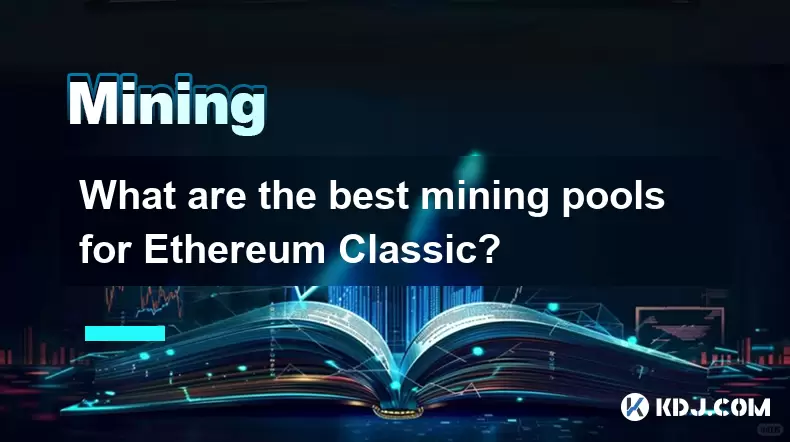-
 Bitcoin
Bitcoin $118,209.3536
1.16% -
 Ethereum
Ethereum $3,151.7546
5.98% -
 XRP
XRP $2.9277
2.35% -
 Tether USDt
Tether USDt $1.0000
0.00% -
 BNB
BNB $689.7099
1.26% -
 Solana
Solana $163.4270
1.91% -
 USDC
USDC $1.0000
0.02% -
 Dogecoin
Dogecoin $0.1983
3.74% -
 TRON
TRON $0.3008
0.51% -
 Cardano
Cardano $0.7435
2.86% -
 Hyperliquid
Hyperliquid $47.6547
-0.48% -
 Stellar
Stellar $0.4625
2.79% -
 Sui
Sui $3.9921
2.71% -
 Chainlink
Chainlink $16.0608
4.23% -
 Hedera
Hedera $0.2348
1.56% -
 Bitcoin Cash
Bitcoin Cash $496.6985
1.25% -
 Avalanche
Avalanche $21.9038
5.41% -
 UNUS SED LEO
UNUS SED LEO $8.8356
-1.88% -
 Shiba Inu
Shiba Inu $0.0...01364
5.31% -
 Toncoin
Toncoin $3.1102
4.35% -
 Litecoin
Litecoin $95.9756
3.59% -
 Polkadot
Polkadot $4.0925
5.78% -
 Monero
Monero $333.7622
-1.44% -
 Uniswap
Uniswap $9.1968
2.25% -
 Bitget Token
Bitget Token $4.6378
6.23% -
 Pepe
Pepe $0.0...01282
6.77% -
 Dai
Dai $1.0002
0.03% -
 Ethena USDe
Ethena USDe $1.0005
0.00% -
 Aave
Aave $329.9143
4.49% -
 Bittensor
Bittensor $441.4995
6.89%
What are the best mining pools for Ethereum Classic?
Ethereum Classic mining pools like F2Pool, Hiveon, and Nanopool offer reliable rewards, low fees, and optimized performance for miners in 2024.
Jul 16, 2025 at 07:35 pm

Understanding Ethereum Classic Mining Pools
Ethereum Classic (ETC) remains one of the most popular proof-of-work blockchains, and mining pools play a crucial role in ensuring consistent and reliable returns for miners. A mining pool is a collective of miners who combine their computational power to increase the chances of successfully mining a block. When a block is mined, the rewards are distributed among the participants based on their contributed hash rate. Choosing the best mining pool can significantly affect a miner’s profitability, stability, and overall experience.
Key Factors to Consider When Choosing a Mining Pool
Before diving into the list of top Ethereum Classic mining pools, it’s essential to understand what makes a pool suitable for a specific miner. Pool size is one of the most important factors. Larger pools offer more consistent payouts, but they may also have higher fees. Fee structure varies across pools, and some charge a flat rate while others implement a pay-per-share (PPS) or proportional model. Server locations also matter, as low latency ensures better mining efficiency and reduced stale shares. Additionally, payout thresholds and minimum payout amounts should align with the miner’s hash rate and earnings expectations.
Top Ethereum Classic Mining Pools in 2024
Several mining pools have established themselves as reliable and efficient for Ethereum Classic miners. Among them, F2Pool, Hiveon Pool, 2Miners, ETC-Pool, and Nanopool are widely recognized for their performance and user-friendly interfaces. Each of these pools offers unique features that cater to different mining setups and preferences.
- F2Pool is one of the largest and most reputable mining pools globally. It supports Ethereum Classic mining with a user-friendly dashboard, low network latency, and stable payouts. F2Pool uses a PPLNS (Pay Per Last N Shares) reward system, which benefits miners with consistent uptime.
- Hiveon Pool is known for its high performance and detailed analytics. It offers real-time monitoring, low pool fees, and excellent server uptime. Hiveon is particularly favored by miners using ASICs and GPUs due to its optimized stratum servers.
- 2Miners is a popular choice for miners who prefer direct ETC payouts without the need for intermediate conversions. It has a clean interface, fast payouts, and multiple server locations to minimize latency.
- ETC-Pool is one of the oldest and most trusted pools specifically tailored for Ethereum Classic. It maintains a decentralized philosophy, supports open-source mining software, and provides transparent statistics.
- Nanopool is another well-established pool that supports Ethereum Classic with a focus on stability and reliability. It offers daily payouts, SSL-secured connections, and customizable worker settings.
Setting Up Ethereum Classic Mining with a Pool
To begin mining Ethereum Classic using a pool, miners need to follow several key steps. First, ensure that the mining hardware is compatible with the Ethash algorithm used by ETC. Next, download and install a GPU mining software such as Claymore’s Dual Miner, PhoenixMiner, or HiveOS for ASICs. Once the software is ready, configure the mining client with the pool address, wallet address, and worker name.
For example, if using PhoenixMiner with Hiveon Pool:
- Open the mining software configuration file.
- Replace the stratum URL with the one provided by Hiveon for ETC.
- Input the Ethereum Classic wallet address where rewards will be sent.
- Set a custom worker name for tracking performance.
- Save the configuration and launch the miner.
After launching, miners can log into the pool’s dashboard using their wallet address to monitor hashrate, accepted shares, and pending rewards.
Optimizing Mining Performance on Ethereum Classic Pools
To maximize profitability, miners should optimize GPU settings, monitor pool performance, and adjust mining intensity based on hardware capabilities. Overclocking GPUs can yield higher hashrates, but it must be done carefully to avoid overheating or instability. Additionally, miners should regularly check the pool’s hashrate distribution to avoid centralization risks. Using failover configurations in the mining software ensures that mining continues even if one server goes offline.
Miners can also switch between pools based on current profitability, payout speed, and server latency. Some pools offer auto-switching features that direct hash power to the most profitable coin at any given time, though this is optional and depends on the miner’s goals.
Security and Transparency in Ethereum Classic Mining
Security is a major concern when choosing a mining pool. Reputable pools implement SSL encryption, two-factor authentication (2FA), and secure wallet integrations. Transparency in reward distribution and uptime is also critical. Miners should look for pools that provide real-time statistics, historical data, and clear payout records.
Some pools like ETC-Pool emphasize open-source development, allowing the community to audit the code and verify fairness. Others, like Nanopool, offer API access for advanced users who want to integrate mining data into custom dashboards or monitoring tools.
Frequently Asked Questions (FAQs)
Q: Can I mine Ethereum Classic with an ASIC miner?
A: Yes, Ethereum Classic can be mined with ASIC miners that support the Ethash algorithm. However, many ASICs are optimized for Ethereum, so compatibility with ETC should be verified before purchasing.
Q: Do I need a separate wallet for Ethereum Classic mining?
A: Yes, you should use a dedicated Ethereum Classic wallet such as Electrum-ETC, Trust Wallet, or ETC Core to receive mining rewards securely.
Q: How often are payouts distributed by mining pools?
A: Payout frequency varies by pool. Some pools like Nanopool offer daily payouts, while others distribute rewards hourly or weekly depending on the balance and pool settings.
Q: Is it better to mine Ethereum or Ethereum Classic?
A: The choice depends on hardware capabilities, market conditions, and personal preferences. Ethereum has transitioned to proof-of-stake, making it unmineable, while Ethereum Classic remains a viable proof-of-work option for miners.
Disclaimer:info@kdj.com
The information provided is not trading advice. kdj.com does not assume any responsibility for any investments made based on the information provided in this article. Cryptocurrencies are highly volatile and it is highly recommended that you invest with caution after thorough research!
If you believe that the content used on this website infringes your copyright, please contact us immediately (info@kdj.com) and we will delete it promptly.
- Avalanche Onchain Insights: Token Relations Unveils Comprehensive Dashboards
- 2025-07-16 22:50:13
- Standard Chartered's Crypto Leap: Regulated Trading and Stablecoin Focus
- 2025-07-16 23:30:13
- Rare Coin Alert: Darwin, Ipswich, and Hidden Treasures!
- 2025-07-16 23:30:13
- Crypto ROI Revolution: Is BFX the Next Big Thing?
- 2025-07-16 21:30:13
- Dogecoin, HBAR, and Partnerships: A Tale of Memes vs. Utility
- 2025-07-16 21:30:13
- Cha-Ching! That £2 Coin Could Be Worth a Mint!
- 2025-07-16 22:10:12
Related knowledge

How are crypto mining profits taxed?
Jul 14,2025 at 12:28am
Understanding Cryptocurrency Mining and TaxationCryptocurrency mining involves validating transactions on a blockchain network and earning rewards in ...

How to keep a mining rig cool
Jul 12,2025 at 01:42pm
Understanding the Importance of Cooling in Mining RigsCryptocurrency mining is an intensive process that places heavy demand on hardware components, p...

How to mine crypto on a gaming PC
Jul 16,2025 at 12:00pm
What is Crypto Mining on a Gaming PC?Crypto mining involves using your computer's processing power to validate transactions on a blockchain network. A...

How to set up a crypto miner
Jul 16,2025 at 09:14am
Understanding Ethereum Gas Fees: What Are They and How Do They Work?Ethereum gas fees are a fundamental aspect of the network, representing the cost r...

Can you mine crypto on a laptop?
Jul 16,2025 at 02:21am
Is It Feasible to Mine Cryptocurrency on a Laptop?Mining cryptocurrency on a laptop is technically possible, but feasibility depends heavily on the ha...

Is crypto mining worth it?
Jul 16,2025 at 01:21am
Understanding the Basics of Crypto MiningCrypto mining refers to the process of validating transactions on a blockchain network by solving complex mat...

How are crypto mining profits taxed?
Jul 14,2025 at 12:28am
Understanding Cryptocurrency Mining and TaxationCryptocurrency mining involves validating transactions on a blockchain network and earning rewards in ...

How to keep a mining rig cool
Jul 12,2025 at 01:42pm
Understanding the Importance of Cooling in Mining RigsCryptocurrency mining is an intensive process that places heavy demand on hardware components, p...

How to mine crypto on a gaming PC
Jul 16,2025 at 12:00pm
What is Crypto Mining on a Gaming PC?Crypto mining involves using your computer's processing power to validate transactions on a blockchain network. A...

How to set up a crypto miner
Jul 16,2025 at 09:14am
Understanding Ethereum Gas Fees: What Are They and How Do They Work?Ethereum gas fees are a fundamental aspect of the network, representing the cost r...

Can you mine crypto on a laptop?
Jul 16,2025 at 02:21am
Is It Feasible to Mine Cryptocurrency on a Laptop?Mining cryptocurrency on a laptop is technically possible, but feasibility depends heavily on the ha...

Is crypto mining worth it?
Jul 16,2025 at 01:21am
Understanding the Basics of Crypto MiningCrypto mining refers to the process of validating transactions on a blockchain network by solving complex mat...
See all articles

























































































